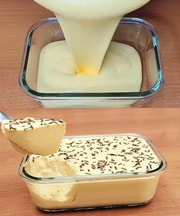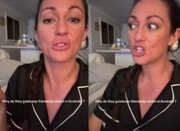Good news for the environment: supermarkets are phasing out 'unrecyclable' plastic meat trays
- Replies 6
We get how you feel – when you're striving to make eco-friendly decisions while grocery shopping, it can be pretty daunting to figure out where to start.
Everywhere you look, there are shelves full of products, all individually wrapped in plastic – the lollies aisle, the fruit and veggie section, and even the deli meat counter.
Most of us here buy our fresh meats in a grocery store, so we're all aware of how much plastic it comes with.
Your steak comes in a plastic foam tray, on top of a plastic pad, while wrapped in a plastic seal. That's a lot of plastic that eventually goes to waste!
And yes, even though some of these plastics are recyclable, that doesn't make them any easier to deal with.

Black plastic meat trays were changed to transparent ones. Credit: Facebook.
To combat the fact that these plastic meat trays can be a pain for recycling equipment to process, major Australian grocers have given them a new colour scheme.
If you've been doing your weekly grocery shopping lately, you may have noticed that the soft black plastic trays used in the meat department are now transparent.
This is because black-coloured trays didn’t work with the optical sorting technology that was used to recycle. When this error occurs, the black meat trays are not recycled into new items; rather, they are simply taken off the conveyor belts and discarded.
As they have been swapped for see-through containers, automated machinery can now pick them to be recycled.
According to Kyle O'Farrell, director of waste management company Blue Environment, the new design serves a simple and clear purpose.
'They've changed the colour so [meat trays] are also sortable,' he said, also mentioning that it wasn't easy to improve and change the design.
He said that most big companies have stopped using PVC plastics and switched to polypropylene (PP), which is made of carbon and hydrogen. PVC has chlorine in it, which is a harmful chemical that, when burned, can make toxic byproducts.

Aussies generated 2.5 million metric tonnes of plastic waste in 2018-19. Credit: VCG.
Another reason for the design change is also because, as reported by National Waste, the country generated an astounding 2.5 million metric tonnes of plastic waste in 2018-19.
Mr O'Farrell also said that non-packaging plastics used in cars, clothes, homes, and electronics have a shockingly low recycling rate of only 7%.
He said this adds up to 10,000 tonnes of waste. 'Not only does it have a terrible recycling rate, but it's also the bigger quantity as well,' he went on to say.
There have been multiple studies indicating that the pandemic coincided with a rise in national plastic waste, with garments and footwear leading the list of most often discarded items.
'Understandably, the pandemic has led to an increase in online shopping and with it a higher amount of packaging for consumers to dispose of at home,' a spokeswoman from Australian Packaging Covenant Organisation (APCO) said.
She also said that recycling soft plastic was a continuing problem because it can't be done through kerbside bins.

There are plenty of REDcycle locations across Australia, particularly in Woolworths and Coles supermarkets. Credit: BioGone.
Here in Australia, most kerbside recycling services don't accept soft plastic packaging. But if it crumples, it can be recycled through REDcycle, so it doesn't end up in a landfill (and onto our beaches, rivers and parks).
By simply collecting all of your 'scrunchables' and placing them in a collection bag at participating supermarkets, the REDcycle program makes it simple for you to recycle your soft plastics.
What goes into the REDcycle bin? Anything soft, made of plastic, and that can be squashed into a ball in your hand.
Small pieces of paper like price stickers or labels can stay on, and you don't need to rinse soft plastics. Just make sure they are empty but don't worry; a few crumbs here and there, or a small amount of dried sauce on them are totally fine. Be sure it's dry, too, because mould thrives in damp plastic.
For the full list of what plastics are acceptable in REDcycle bins, check out this link here!
Credit: Replas.
In the ABC TV documentary shown above, Craig Reucassel set out to find out how much waste our country produces and to do what he could to reduce it. Learn by watching the clip here:
All over Australia, hundreds of supermarket locations are taking part in this initiative. REDcycle bins are normally found close to the cash register, but if you're having trouble finding one, you can always just ask the customer service desk!
What are your thoughts, folks? How have you been working to lessen the amount of plastic used and thrown away in your own homes? Let us know in the comments!
Everywhere you look, there are shelves full of products, all individually wrapped in plastic – the lollies aisle, the fruit and veggie section, and even the deli meat counter.
Most of us here buy our fresh meats in a grocery store, so we're all aware of how much plastic it comes with.
Your steak comes in a plastic foam tray, on top of a plastic pad, while wrapped in a plastic seal. That's a lot of plastic that eventually goes to waste!
And yes, even though some of these plastics are recyclable, that doesn't make them any easier to deal with.
Black plastic meat trays were changed to transparent ones. Credit: Facebook.
To combat the fact that these plastic meat trays can be a pain for recycling equipment to process, major Australian grocers have given them a new colour scheme.
If you've been doing your weekly grocery shopping lately, you may have noticed that the soft black plastic trays used in the meat department are now transparent.
This is because black-coloured trays didn’t work with the optical sorting technology that was used to recycle. When this error occurs, the black meat trays are not recycled into new items; rather, they are simply taken off the conveyor belts and discarded.
As they have been swapped for see-through containers, automated machinery can now pick them to be recycled.
According to Kyle O'Farrell, director of waste management company Blue Environment, the new design serves a simple and clear purpose.
'They've changed the colour so [meat trays] are also sortable,' he said, also mentioning that it wasn't easy to improve and change the design.
He said that most big companies have stopped using PVC plastics and switched to polypropylene (PP), which is made of carbon and hydrogen. PVC has chlorine in it, which is a harmful chemical that, when burned, can make toxic byproducts.
Aussies generated 2.5 million metric tonnes of plastic waste in 2018-19. Credit: VCG.
Another reason for the design change is also because, as reported by National Waste, the country generated an astounding 2.5 million metric tonnes of plastic waste in 2018-19.
Mr O'Farrell also said that non-packaging plastics used in cars, clothes, homes, and electronics have a shockingly low recycling rate of only 7%.
He said this adds up to 10,000 tonnes of waste. 'Not only does it have a terrible recycling rate, but it's also the bigger quantity as well,' he went on to say.
There have been multiple studies indicating that the pandemic coincided with a rise in national plastic waste, with garments and footwear leading the list of most often discarded items.
'Understandably, the pandemic has led to an increase in online shopping and with it a higher amount of packaging for consumers to dispose of at home,' a spokeswoman from Australian Packaging Covenant Organisation (APCO) said.
She also said that recycling soft plastic was a continuing problem because it can't be done through kerbside bins.
There are plenty of REDcycle locations across Australia, particularly in Woolworths and Coles supermarkets. Credit: BioGone.
Here in Australia, most kerbside recycling services don't accept soft plastic packaging. But if it crumples, it can be recycled through REDcycle, so it doesn't end up in a landfill (and onto our beaches, rivers and parks).
By simply collecting all of your 'scrunchables' and placing them in a collection bag at participating supermarkets, the REDcycle program makes it simple for you to recycle your soft plastics.
What goes into the REDcycle bin? Anything soft, made of plastic, and that can be squashed into a ball in your hand.
Small pieces of paper like price stickers or labels can stay on, and you don't need to rinse soft plastics. Just make sure they are empty but don't worry; a few crumbs here and there, or a small amount of dried sauce on them are totally fine. Be sure it's dry, too, because mould thrives in damp plastic.
For the full list of what plastics are acceptable in REDcycle bins, check out this link here!
Credit: Replas.
In the ABC TV documentary shown above, Craig Reucassel set out to find out how much waste our country produces and to do what he could to reduce it. Learn by watching the clip here:
All over Australia, hundreds of supermarket locations are taking part in this initiative. REDcycle bins are normally found close to the cash register, but if you're having trouble finding one, you can always just ask the customer service desk!
What are your thoughts, folks? How have you been working to lessen the amount of plastic used and thrown away in your own homes? Let us know in the comments!







